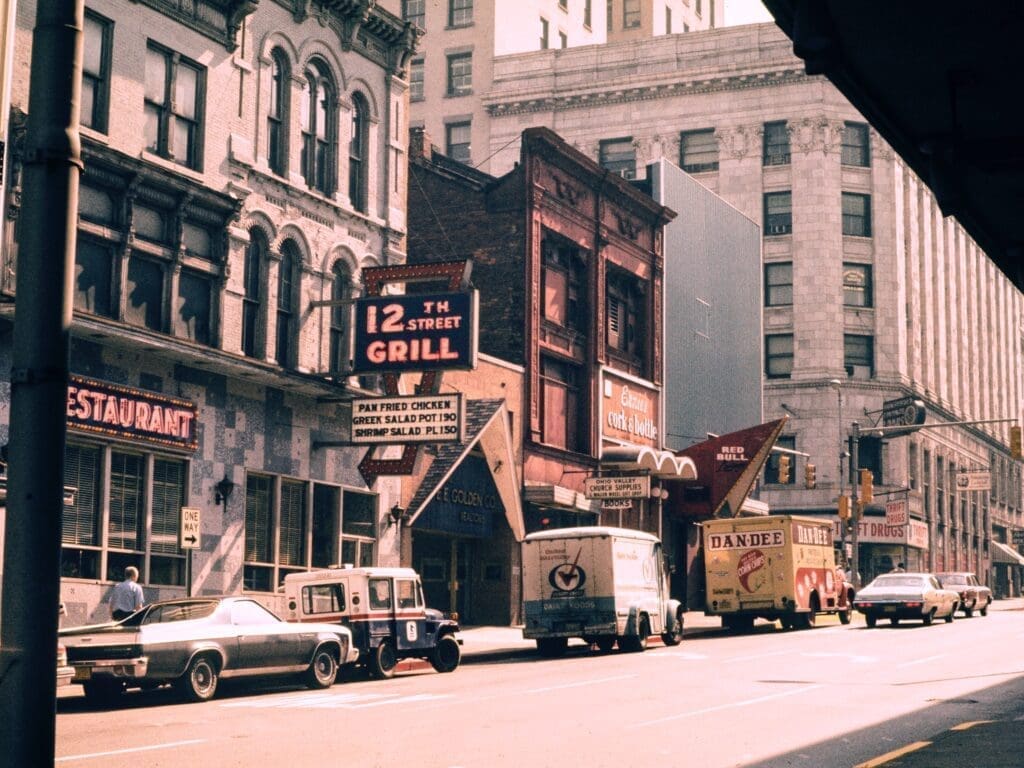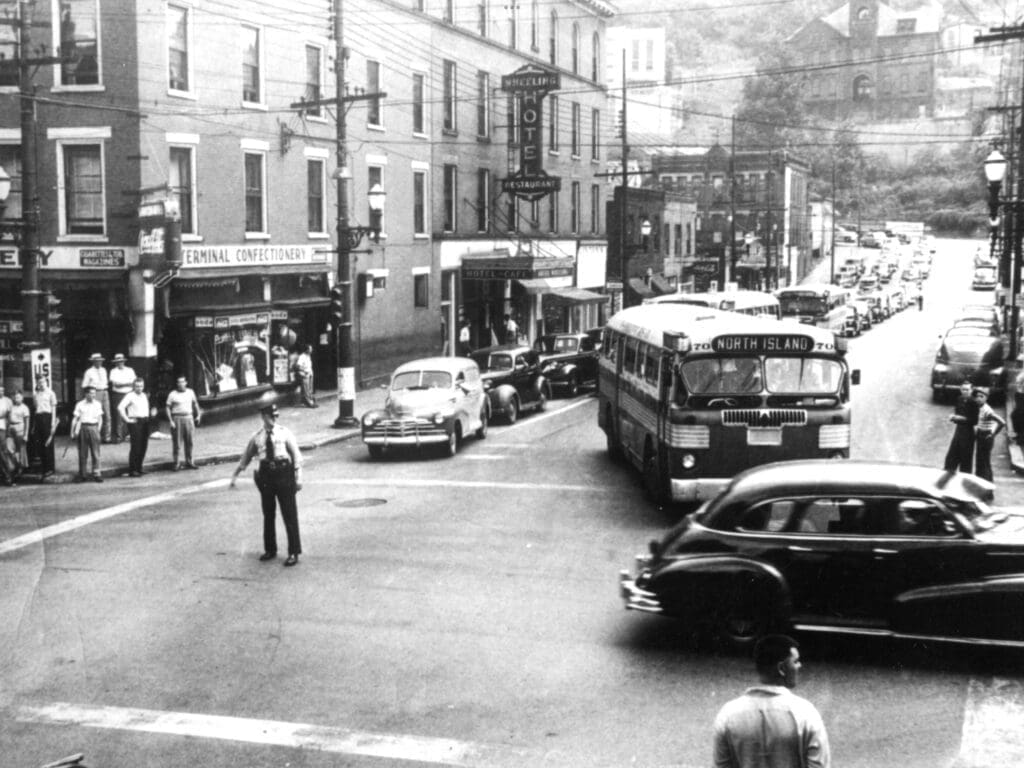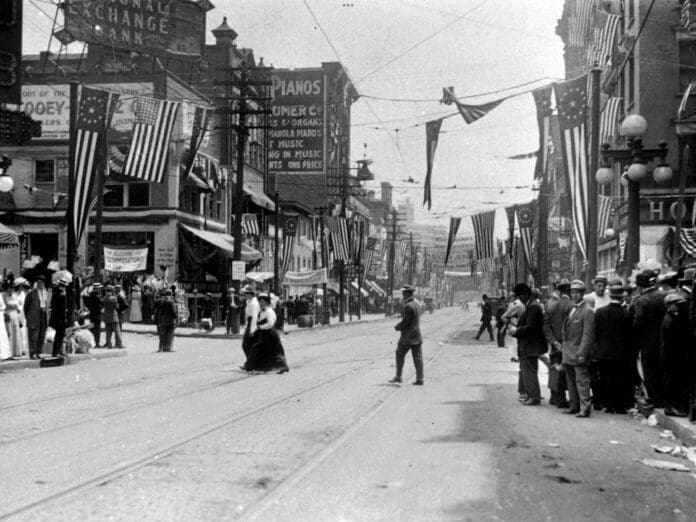The roots run deep ‘round these parts, now don’t they? Lots of stories are told, legends recalled, and a whole room at the local library has been filled with volumes of this and that.
The city of Wheeling dates back to times of revolutionary colonization, and that’s a polite way of stating that Native Americans were chased away if not murdered for the land and all that came with it. Historians repeat lessons about sieges and caves and coal mining and industrial invention, and the storytellers narrate a city’s rise and fall to reality.
“Now and Then” pictorials of the riverfront downtown display what was, what’s been salvaged, and what’s been erased for whatever reasons. History has paid the price, though, when civic leaders have chosen trends over antiquity.
James Thornton, a Wheeling native who has been in the business of archiving the history of the Friendly City for decades, has finally initiated a project that effectively introduced the past to the future. Thornton has created the “Wheeling History” channel on YouTube, and he’s posted several chapters of his “Dissecting Wheeling” series over the last two months.

“I’ve been doing history for about 30 years and I’ve always wanted to do something like this,” Thornton said. “It’s taken me a year-and-a-half to get to the point where I could do it because I was out buying microphones and things like that before I realized how simple it is these days. I figured out I could simply do the recordings on my phone.
“I always thought that if I could do a video that allowed me to talk about one of two images it would be an interesting feature. Granted, sometimes I include three images, but that’s because they all tie together to tell a story,” he said. “It really is incredible how much you can see in just a few images, and it’s been very well received for it being the history of a little town like Wheeling.”
Yes, it is that simple. Thornton selects a photo – maybe three even – and sincerely he tells a story.
“I know a lot about most of the images because I’ve lived in Wheeling my entire life, and I have done different things over the years. When I talk about a photo of downtown Wheeling, maybe what’s in the picture is no longer there but I get to talk about it because it was standing when I was a younger man growing up here,” Thornton said. “But there are times when some of the people who see the videos and they add to what I talk about with even more history. I think that’s one of the best parts.
“It’s great when they engage because there’s people out there who know more than I do,” he said. “They help us out by telling us where things were and who had this and that. It really adds to the project,” he said. “I have some images from the 1800s, and, of course, I wasn’t around yet but some people still know the history involved because of what they’ve been taught during their lives. It’s really fascinating.”

Past & Present
He shares the links to Facebook pages like “Memories of Wheeling” so as many people as possible gain access, but Thornton is frustrated with the number of subscribers he’s gained thus far.
Thornton wanted the historical experiences to be available free of charge, and he believes it’s an easy process to register, but perhaps it’s not as basic as he believes.
“I know, based on the information YouTube gives you as an account holder, that a lot of older people are enjoying what I’m doing, but I would like to get more subscribers who are younger so they can learn what we here before what’s here today,” Thornton said. “I believe YouTube makes a little more difficult to subscribe than it needs to be, I guess, because you have to have a Gmail account, but it doesn’t cost anything but a little bit of time.
“I’m hopeful that as the word spreads about this series, people will take that little bit of time to subscribe because then they’ll get notifications each time a new video is added,” he said. “And that’s a few times every week because I’m really enjoying the time I spend working on these because I get to think back on a lot of great times in Wheeling.”

Lived & Learned
Some may believe Thornton remains “stuck in the past” because of his work with the history of the city of Wheeling and the surrounding communities, and there is something to be said about that assumption.
Thornton is 75 years old so when he was born to a hardworking couple living in Center Wheeling, it was 1948, the city’s population was over 60,000, and jobs of all sizes and salaries were readily available. Soot was in the air, mills and factories lined the Ohio River, and the rolling hills of Appalachia were pillared hallow and stripped of warming rocks called coal. The people, most anyway, were dirty, but they weren’t hungry.
“All of the images that I use are older, historic images that I have the rights to because I either own the original or I have been given the permission to archive and to use as a part of this historical series,” the 75-year-old Thornton said. “Some of them are before my time and others are during my working years in the city, whether it was in downtown or in another part of Wheeling.

“History is so fascinating, and it’s really something when you see an image and then go there and see how it’s either changed through the years, or you see how it’s been preserved through the years. Thankfully, we have a lot of examples of that preservation throughout the city,” he said. “Producing these kinds of videos is something I enjoy since I’ve been involved with the history of the city for a very long time.”
Wheeling is different now. Although the city’s population has steadily decreased since Thornton’s childhood down below 30,000 residents, the pace of surrender has slowed. So, why not remember? Why not think back at a time of prosperity and opportunity? Why not pick apart the past in search of nuggets of wisdom pertinent to the future?
“I’ve been seeing good things happening over the past 15 years, and I love it,” the historian said. “I think we have a future, a positive one, and all you have to do is look at someone like Jessica Barclay and what she and her partner have been doing with Thrive Wheeling in downtown. What they offer there is something completely different than ever before, and there was a time when people around here were really afraid of anything new, anything different.
“I just hope what I’m doing helps everyone remember where we came from,” Thornton added. “Because we come from a lot of history.”


